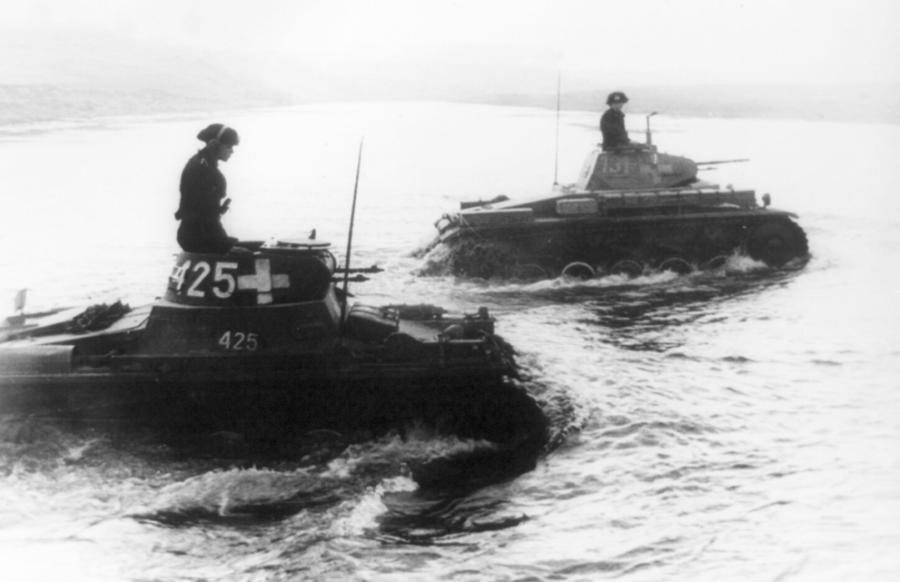Two Panzers of the SS-Leibstandarte Adolf Hitler cross the Bzura River During the German Invasion of Poland in September of 1939
The Waffen-SS served a unique role in the Second World War; operating as an army within an army. Germany was the only major combatant to possess such an organization. The Waffen-SS, combat-SS, represented one arm from the larger SS led by Reichsfuhrer Heinrich Himmler. The SS, Schutzstaffel or Protection Echelon, grew considerably from only 280 men in 1929 to 10,000 by 1931. Designed to act as an elite force loyal to Hitler the Waffen-SS became a Nazi Praetorian Guard.
The SS comprised four organizations including the Waffen-SS (SS-VT early in its history), the SS-Totenkopf (Death's Head - concentration camp personnel - the 3rd SS Panzer Division Totenkopf later formed from the camp guard ranks), Police-SS, and Ordinary-SS rounded out the Schutzstaffel's ranks. Himmler also created the Sicherheits Dienst (Security Service) in 1929, and the SD served as intra-party police before later gaining notoriety, along with the Einsatzgruppen, in particular during the slaughter of the Jewish and Slavic populations in Eastern Europe.
The SS-VT first served as Hitler's personal guard, organized into the standarte (regiment) Leibstandarte Adolf Hitler (LSAH) - the name meant Body Guard Standard - under Sepp Dietrich's command. The LSAH began only in company size, growing to regimental size, then after France fell it expanded to a full brigade, before reaching divisional size in 1941. Other SS-VT units formed during the 1930s included the regiments Germania and Deutschland; together with Leibstandarte forming the core of what became the Waffen-SS - the SS-VT's name after the 1939 Polish campaign.
Picture Courtesy of LOC/Klaus Weill


